E. coli septicemia in broiler carcasses
A total of 11 and 52 broiler carcasses were condemned in two consecutive batches, coming from the same farm. All of them showed different combinations of the following lesions: fibrinous coelomitis, multifocal necrotizing hepatitis, nephritis and renal hemorrhages, pericarditis, pneumonia, cutaneous lesions, cellulitis, and arthritis. Also, in some of the carcasses, the sciatic nerves had a yellowish coloration and they appeared increased in size.
The inspectors believed that all the findings were compatible with a colibacilosis, but they wanted to rule out concomitant infections, such as a salmonellosis or a Marek's disease. Therefore, they submitted 9 of these carcasses to SESC.
At necropsy, the following lesions were observed:
- Hepatitis, necrotizing, suppurative and multifocal (in all 9 animals)
- Pericarditis, fibrinous and suppurative (in 6 animals)
- Lymphoid depletion in the bursa of Fabricius (in 6 animals)
- Enteritis, lymphoplasmacytic/ granulomatous (in 2 animals)
- Pulmonary edema and congestion (in 2 animals)
- Lymphoplasmacytic meningoencephalitis (in 1 animal)
- Dermatitis, fibrinous and necrotizing (in 1 animal)
The lack of microscopic lesions compatible with Marek's disease allows ruling out the participation of this viral agent.
Additionally, a microbiological study was performed from the 5 fresher carcasses. In 2 of them a pure growth of E. coli was obtained from all the samples submitted (liver, spleen, kidney and celomic swab), while in the other two, apart from E. coli, colonies of Aeromonas veronii were also obtained. These results confirm that E. coli was the main causative agent, although the participation of Aeromonas veronii cannot be confirmed. The bibliography regarding Aeromonas spp. describes its potential as a septicemia causative agent, although also states that it frequently contaminates carcasses during its processing, which cannot be ruled out in this case. Bacteria of the genera Salmonella could not be isolated in any of the cases. (AC)
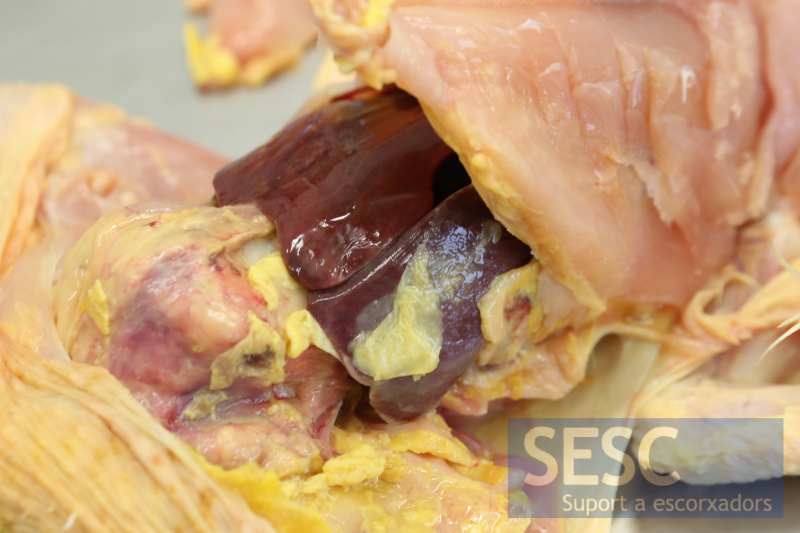
Celomic cavity. Fibrin strands can be seen over the hepatic surface and the seroous membranes of the celomic cavity (fibrinous serositis).
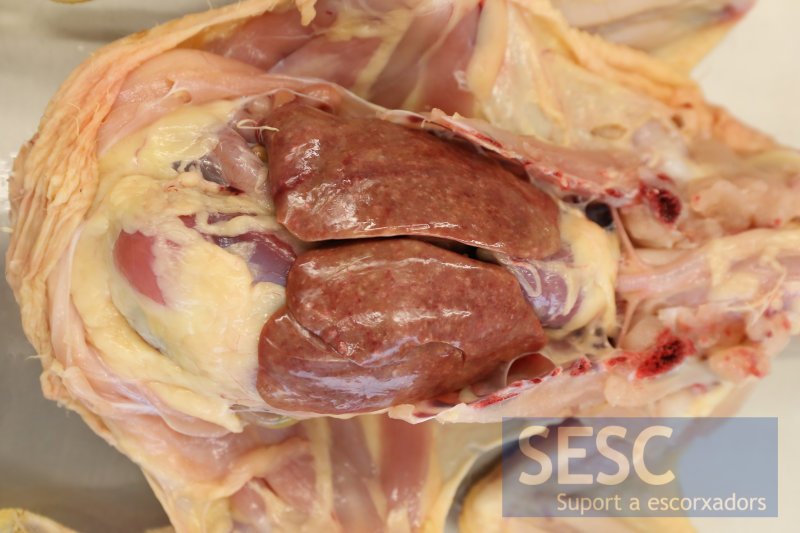
Multifocal generalized necrotizing hepatitis in one of the carcasses.
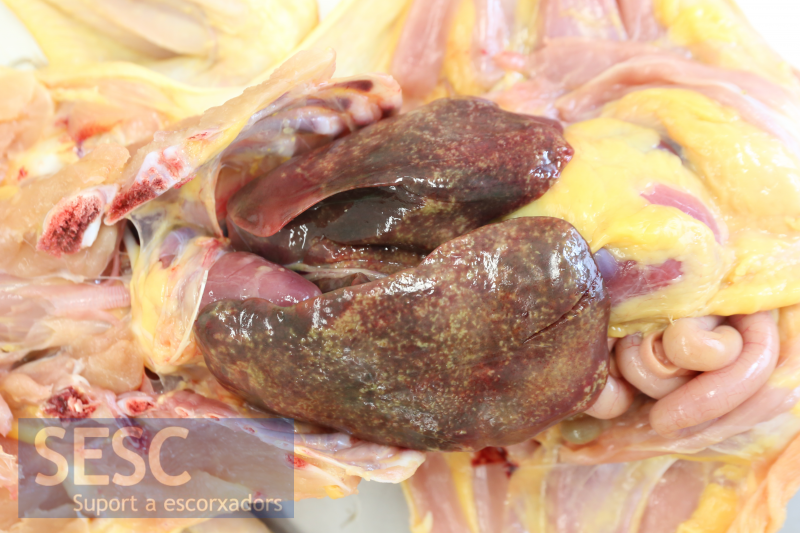
Multifocal generalized necrotizing hepatitis in one of the carcasses.
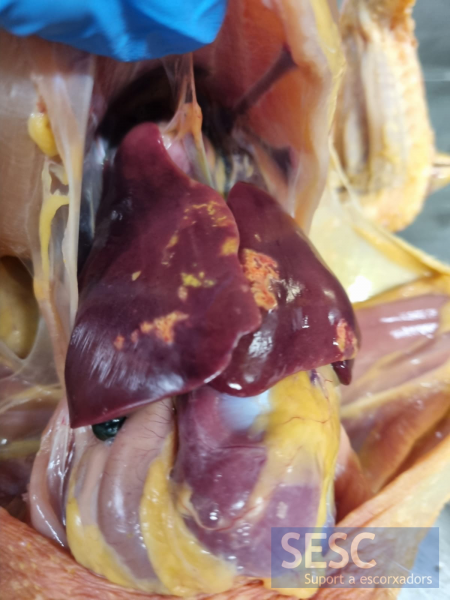
Carcass showing a necrotizing hepatitis like the ones in other carcasses. This time, the distribution is multifocal and shows a reduced extension.
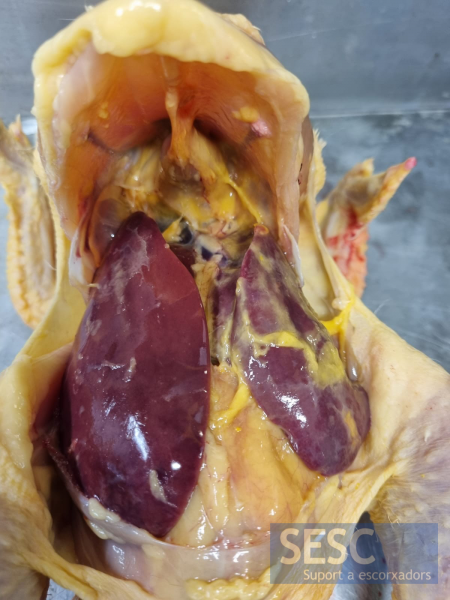
Celomic cavity with presence of abundant fibrin strand that cover the hepatic surface and the serosa.


1 comment(s)
thanks for efforts